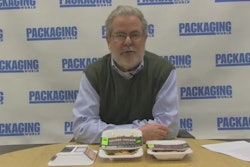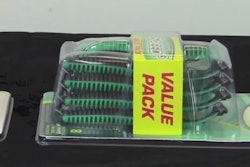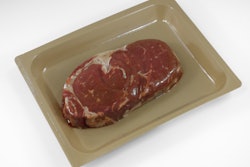
The trend, as I’ve seen it for certain medical devices, is toward more flexible pouch packaging versus tray packaging where practical, depending on product mass and geometry. Flexible packaging can be easier for hospitals to dispose of versus tray packaging (less volumetric waste and fewer material recycling streams) and does not require dedicated tooling for tray placement and lid sealing.
Flexible packaging by itself, however, does not stabilize the product within the pouch unless external support is provided by foam inserts or paperboard trays and dividers. This has to be carefully applied so abrasion, pouch folding/wrinkling, or sharp edges do not compromise the pouch sterile barrier. An excellent method to stabilize product within the pouch is the application of vacuum packaging in combination with a paperboard tray or insert for stabilization within an outer carton.
Vacuum packaging is very versatile and can accommodate many product sizes and configurations, from long tubular bent parts to flat and contoured plates to screws. Vacuum packaging can include gas purging for oxygen-sensitive product, and several different machine configurations are available. The best machine to use depends on product volume and variety. The machine manufacturer selected should be reputable and well-established and have excellent service and parts support for reliable operations, especially for multi-shift and 24/7 production where the equipment is continually utilized and stressed. For a high-mix/low-volume product environment, single- and double-chamber machines seem well-suited for ease of operation, load/unload characteristics, and equipment footprint. For controlled-environment room operation, it is advisable to locate any vacuum pumps, chillers, and purge gas storage outside of the room for easier maintenance and to maintain room particulate levels within ISO classification standards.
Testing needs to be performed to determine the optimum vacuum level for various products and geometries. Worst-case products need to be selected, such as shortest/longest, smallest/largest, and some interim sizes, so the range of appropriate vacuum levels can be determined. Interim sizes should especially be tested since the packaging volume can significantly change from largest to smallest product and several different vacuum levels could be required within a product family. The proper vacuum level can be determined by visual examination and an informal pouch “shake” test to determine if the product moves excessively.
Visual examination should ensure proper product encapsulation without excessive pouch wrinkling or folding around the product, which can cause stress cracking and splitting of the film material. Sharp or protruding product features should be closely examined and, if necessary, extra protection used to protect the film from cuts or punctures. Options include tip guards or TPE/TPU sleeves. Photographs are excellent for documenting the effects of various vacuum levels and product geometry. Once initial vacuum levels have been determined, transit and shelf-life testing should be performed to confirm that the packaging design and process meet all required specifications.
Another important aspect of vacuum packaging is software validation. Some machines have custom programming and features, store many recipes, and can require extensive software validation. Software compliance analysis, user requirement specifications, hardware qualification, compliance plans, compliance testing, and system management plans (SMPs provide equipment disaster recovery, back-up, and retirement plans) are becoming more complicated and detailed and require more training and assistance to properly perform and manage.
To properly and efficiently validate vacuum packaging processes, it is critical to have an experienced team of experts and mentors to consult and work with during the process. From packaging system designers, equipment suppliers, facilities engineers, maintenance technicians, calibration technicians, packaging process engineers, validation quality engineers, computer system validation engineers, packaging transit testing, and shelf life testing experts, all will play important roles in successfully implementing and maintaining a new packaging process.
I know now how to validate vacuum packaging processes through years of on-the-job training. I wish I had known earlier in my packaging career the advantages of vacuum packaging, since it is a versatile and capable packaging process for many different products employing flexible packaging.
About the Author: Glenn Whiteside, CPP, MSIE is a Packaging/Manufacturing Engineer in the Sterile Pack Department at DePuy Synthes USA. For more information on IoPP, visit www.iopp.org.

























